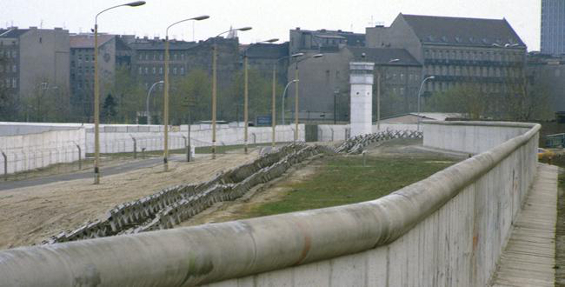Immigration policy in the United States is like the weather: everyone complains about it, but nobody does anything about it. For years, Democrats and Republicans alike have floated proposals for fixing our broken system; in a few cases, they've even attempted compromise proposals that could, in a sensible democracy, be accepted begrudgingly by both sides. Of course, these proposals have all gone nowhere. Many of those who have stood in the way of progress on this issue have said that certain border-security conditions must be met before real reform could be tackled. These conditions range from the mass deportation of millions of undocumented immigrants to a steeply increased presence of border control in order to stop the incoming traffic. Yet no one who has declared that the border must be secured before reforming our immigration system has actually described what a secured border ought to look like. Perhaps we must cut illegal immigration to half its current level, or perhaps even a quarter (never mind that this has already happened). Maybe even a single illegal border crossing is unacceptable.
The most colorful precondition of the obstructionists is that a wall should be constructed on our border with Mexico. This wall (paid for by the Mexican government, no less, according to some) would be an impassible barrier that would put a definitive stop to any attempts to enter the United States without authorization.

Pictured here is probably the most secure border in history: the Berlin Wall. This wall, 96 miles long, surrounded the city of West Berlin from 1961 to 1989. The twelve-foot wall was constructed of reinforced concrete and barbed wire, and was further secured by trenches, floodlights, anti-vehicle caltrops, attack dogs, and over 300 watchtowers. Parts of the wall were built in parallel, separated by an empty hundred-meter zone known as the "death strip," where guards had a clear field of fire and would-be escapees had no opportunity for cover. The border was patrolled by ten regiments of troops.
Despite all of this security, concentrated in a relatively small area, about 5,000 people managed to escape to West Berlin over the years that the wall was in place.
In contrast, the border between the United States and Mexico is 1,954 miles long, more than twenty times the length of the West Berlin perimiter. What would it take to secure this border at an equivalent level to the Berlin Wall?
We could begin by estimating the construction cost. According to the Milwaukee Journal in 1963, the cost of building the Berlin Wall was estimated as US$25,000,000, which works out to $193.5 million in 2016 dollars. This was in one of the earlier phases of the wall; several stages of upgrades followed before it reached its peak of physical security, at additional expense. But let's assume that we built the U.S.-Mexico border wall to 1963 standards, and had a similar construction cost per mile. This would cost over $3.9 billion. Good luck sending that bill to the Mexican government.
The initial cost to build the wall, however, pales in comparison to the cost of patrolling it. To maintain troop levels equal to the East German patrols, ten regiments strong over 96 miles, I estimate that around 300,000 personnel would be required, or almost one-quarter of the active-duty U.S. Army. This troop level is equivalent to 75 modern-day Infantry Brigade Combat Teams, at a total maintenance cost of nearly $20.8 billion annually (mostly personnel costs), based on numbers from the Department of Defense's 2013 Unit Cost and Readiness report to the U.S. Congress.
Of course, none of this speaks to the moral cost of emulating the emigration policies of Cold War-era East Germany. And yet, in spite of all of our effort, an unguessable amount of people would still find a way to cross the border.
Certainly we should enforce our laws, to the extent of our reasonable ability. But perhaps we'd get better results by addressing the reasons why so many people attempt to enter the United States, even if unable to obtain legal authorization. Certainly many come to escape rampant poverty and seek economic opportunity; yet many of those who decry illegal immigration also favor isolationist trade policies, blocking changes that could improve both our own economy and those of our neighbors. Others wish to avoid the violence of drug cartels and gangs, which are propped up by a failed war on drugs. Still more are refugees from political turmoil, particularly those who pass through Mexico on their way from other nations in Central and South America, some of whose governments we have had dubious relationships with.
But never mind all of that, right? Those are all complex problems with difficult solutions, requiring nuanced policy proposals and cooperation with other countries. Much easier to just yell stuff about walls. While we're at it, we may as well build one on our border with Canada, too. We've already cleared the land for the death strips.

